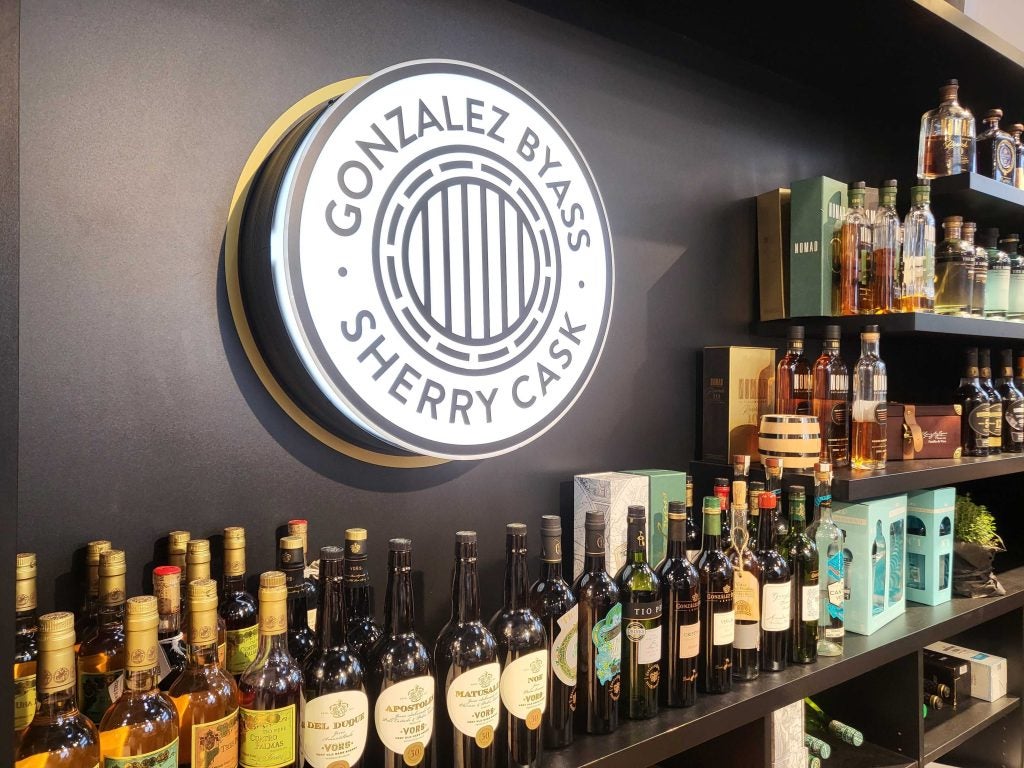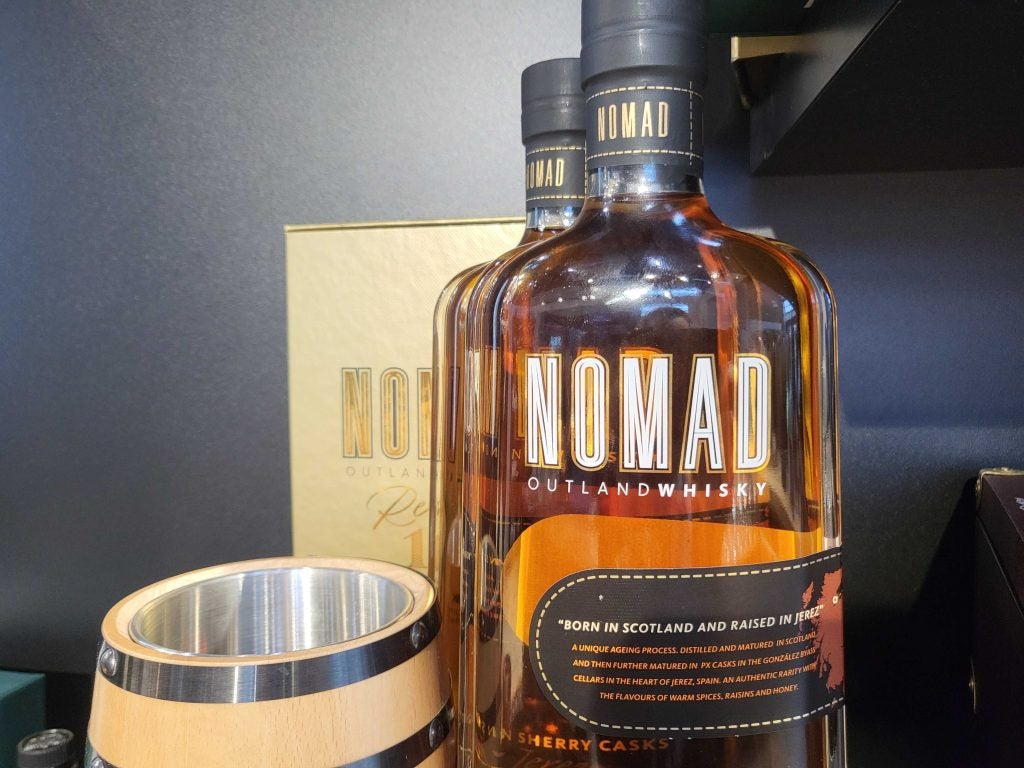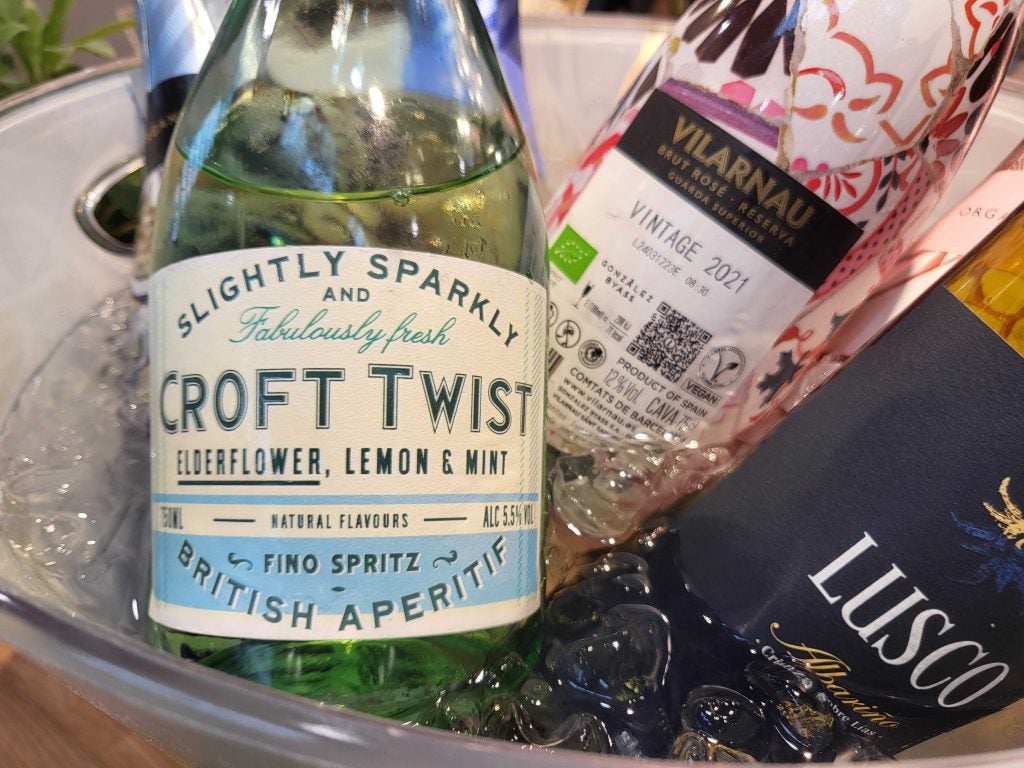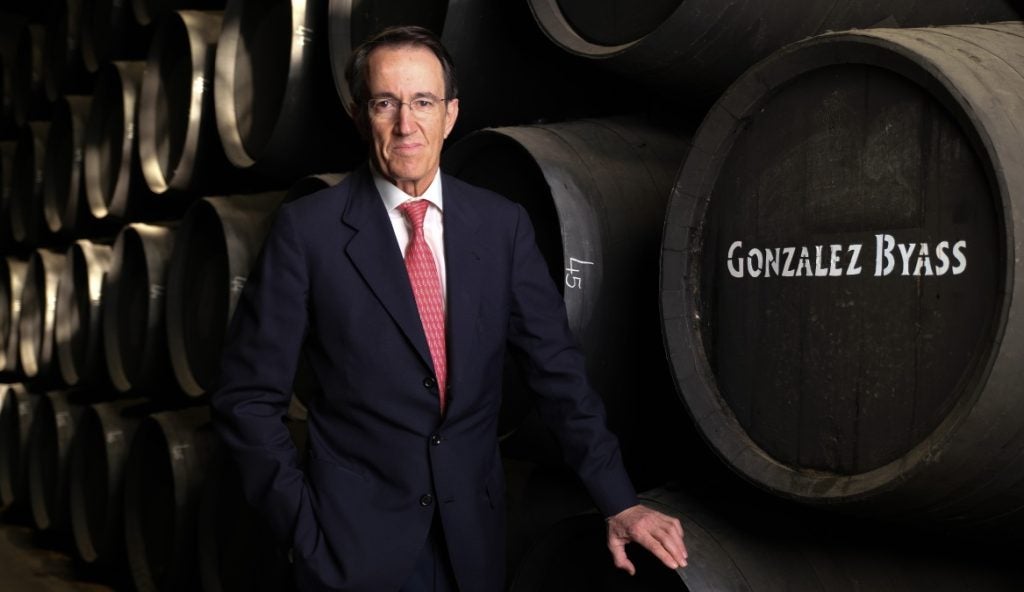Though perhaps best known for its flagship Sherry brand, Tio Pepe, González Byass’s empire has grown to include 14 wineries in Spain, Chile and Mexico, as well as a portfolio of spirits.
Just Drinks caught up with president Mauricio González-Gordon about the company’s growth plans, product and brand development and environmental work.
Just Drinks: González Byass has just relaunched Chilean winery Viñedos Veramonte. What have you changed and why?
Mauricio González-Gordon: I always say that the New World, Chile in particular, is not so much about origin denominations but it's much more open in conceptual terms than European origin denominations. That's interesting because it allows you to grow different varietals – but, at the same time, we feel there is value in trying to produce and communicate what a certain valley can do best.
One of the things we've tried with Veramonte, which is now 100% certified organic, is to have two very separate concepts out of the two valleys in which we are present: Casablanca Valley and Apalta, in the Colchagua Valley.
We've been working to separate these two valleys very clearly – not only in the way we produce, which we were already doing but also in the way we communicate and the branding.
Just Drinks: Why did you decide to you divide the brand into these two valleys?
González-Gordon: Chile has a challenge as a producing country, because you’ve got top-end wines which are competing around the world, but in some markets where a lot of inexpensive Chilean wine has been, the perception is more entry-level.
González Byass concentrated on the medium-to-above level, we're not an entry-level expert. And therefore we are keen to show what a certain origin can produce at that level – there are differences and nuances of each different valley which can be portrayed to add value and interest.
We try to express characteristics of each one of these valleys and the story behind them through our wines, brands, packaging and marketing. For example, in Apalta we have pre-phylloxeric vines, so it's interesting to tell the story of how these wines are achieved.
We're trying, in everything we do – from the way we cultivate our vineyards, to how we relate to our local communities, to how we do the packaging and the messages that we send – to really reflect that differentiation.
We have made a strategic decision not to use the umbrella brand, González Byass, but rather to allow each individual winery to express their differentiation, the unique characteristics of their area.
At times, that is a little more difficult because people have to get to know each individual origin. But it's also a way to show that we have a collection of individual wineries.
Just Drinks: Veramonte is now 100%-certified organic and the group has a lot of initiatives under its People And Planet strategy, where are you looking to invest in terms of sustainability in the next few years?
González-Gordon: I think we will be quite spread. Last year we invested €2.6m ($2.8m) in sustainability. I would say certainly the organic farming will continue and will be an important chapter. Renewable energy also needs to continue, everything we're doing with green hydrogen.
We’re using six sources of renewable energy but not in every winery, so we need to continue installing. In our Sherry winery in Jerez we reduced CO2 emissions by 60% between 2013 and 2023 – and an important part of that was energy, as well as making our processes more efficient. Others are a bit slower, but as a whole we have a target of reducing by 55% by 2030, in line with the United Nations’ goal.
Water – especially in the south of Spain, water is a worry. And we've now been over three years with limited water resources. So we need to keep on working on reducing the amount of water we use and recuperating rainfall.

Just Drinks: You also just launched London No. 1 Copper. How has that gone?
González-Gordon: London No. 1 has been an interesting exercise. In the past, we've had some gin but, some years ago, when the top-end gin category really started to grow, we launched London No. 1 and it really got acceptance in many markets around the world.
We are trying to launch things which would add a certain link to our experience [as a Sherry producer] – like the London No. 1 Sherry Cask which we launched some time ago and now London Copper Still – especially thinking about the mixology world, which has grown tremendously.
London No. 1 is now available in around 70 markets and we are very much focused on the mixology side and the on-premise.
Just Drinks: What's González Byass's longer-term spirits strategy? Do you plan to keep building that stable – it's a lot smaller than your wine portfolio?
González-Gordon: We have two categories within spirits. We have the top end, and we reckon that there we have an opportunity because it's smaller, with value, more of a niche category including Lepanto, London and Nomad.
Then we have some regional spirits which are not at the top end but work well and help our distribution exercise, for example, Soberano brandy in Spain and Chinchon anis.
In 2017, we bought Domecq (brandies and wines) from Pernod Ricard, because Mexico was a strategic market for us and we felt we needed some volume to help our wine brands and our niche spirit brands to grow. So we bought Domecq and we became an important distributor in Mexico.
Domecq also has wines in [Mexican state] Baja California, in the Guadalupe Valley. It gave us the opportunity not only to represent those spirits and wine brands from Domecq but also to bring all our wines from Europe and Chile into the Mexican market.
Just Drinks: Does Domecq distribute purely in Mexico?
González-Gordon: Domecq as a sales organisation is only present in Mexico. But we have our own commercial organisation in the US, which imports Domecq products.
In South America, Domecq is present but we do it through a third party.
Just Drinks: How do you manage your portfolio in export? Behind the scenes, is each brand managed separately?
González-Gordon: Interesting question, because we have a rich portfolio and not all origins share equal demand in different markets. So we try to build a portfolio specifically for each market and we are clear in our minds about the top priorities in each one.
We have distribution capacity in Spain, the United Kingdom, the US, Mexico and Chile. And the portfolios don't fully coincide. Most of our brands are available but the priority brands are different.
Rioja, Cava, Sherry and Veramonte are always mostly present – these are common to all and then the rest depends on the priority.
Then of course there is the spirit side which is also important for us. We sell Brandy, gin, whisk(e)y – our whisk(e)y is a symbiosis between Sherry and whisk(e)y producers.

Traditionally, we've been seasoning or ageing sherry casks for the whisk(e)y producers but some time ago we started doing it the other way around. So rather than sending the cask to whisk(e)y producers, we’re bringing the whisk(e)y down to Jerez. We did it with Scotland some years ago and last year we launched an Irish whiskey with Nomad.
Just Drinks: Are the five countries where González Byass has its own distribution also your biggest markets?
González-Gordon: Yes, no doubt. Spain, the UK, Mexico, the US and Chile form almost 80% of our activity. The other 20%, the rest of the world, would be like a sixth market if you like. So it's very concentrated.
Just Drinks: Which is the biggest in volume and value?
González-Gordon: Mexico, followed by Spain, the UK and then Chile.
Then there is a second group where we don't have our own distribution capacity but it's still a very important market, like Germany, Brazil, Canada, Japan. So we have a strong focus in all of these but we cannot substantiate having our own commercial structure.
Just Drinks: How many countries do you export to in total?
González-Gordon: We are in about 110. Some brands, like our flagship Sherry Tio Pepe, is present in all of them. Peronia is probably present in about 80-85.
With Sherry, and in particular with Tio Pepe, I feel that part of the value of the brand is that it's so widely available, irrespective of the volumes. So sometimes we make the effort of being present in a very small market, because we feel that's part of the value of the brand, that the international traveller can find Tio Pepe almost anywhere they go. We don't want to lose that.
Just Drinks: How is demand for Sherry faring?
González-Gordon: Sherry had some years in which consumption was being reduced, probably because there were a lot of other origins compared to 35 years ago.
Still, I think Sherry has retained the differentiation, the uniqueness, the complexity, and I would say it remains one of the top wines in the world.
Now we are living a resurgence of Sherry because people are finding new categories. Sherry has always been different depending on the market. Spain is mostly fino and manzanilla, pale and dry. You go to the United Kingdom and it's more sweeter styles.
But I find that now people are discovering some hidden sub-categories like palo cortado and dry amontillado. It’s going from being an appetiser to sitting at the table and I think discovering some of these sub-categories has helped.
It's also working well on the cocktail side. We try to help it by doing the Tio Pepe challenge which takes place every year in 15 countries with 50-60 participants from each. In May, 15 finalists come for the final in Jerez and we have a contest.
That helps a little bit on the on the mixology side and we’re seeing a lot younger consumers coming into the category.
We also do a contest for restaurants, Copa Jerez, which is supported by the origin denomination council. It happens every two years and it's done in a theatre, so it’s very visual. We’ve had some three-star Michelin chefs and top people acting as jury. I think it's helped a lot to show how Sherry can participate on the table [with food].
Just Drinks: Is Sherry becoming a popular mixer with the growth of the LoNo category? In Portugal there have been marketing campaigns around mixing Port and tonic, for example. What about the ‘She and T’?
González-Gordon: I'm a great fan of fino and tonic. It really matches well, especially in a hot climate.

We only recently launched Croft Twist, with 5.5% abv. The basis is a fino but it has elderflower and a little bit of mint and it's lightly bubbly. It's a great, informal appetiser. It’s been very successful in Spain.
Just Drinks: Is that your only low-alcohol product?
González-Gordon: No, we have whites and reds at 5.5% abv, called Fragantia. We also produce 0.0% abv rose and white Cava. We find that it works better in Cava because the spark helps, you still get the feeling. It is difficult to get wine at 0.0% to resemble wine; the alcohol gives body, structure.
Clearly, we're seeing that low and no is growing steadily and there is an interest, so we need to keep working in that direction.
It can also be a way to attract younger consumers. For instance in Spain, young people don't go into the wine category until we are of a certain age – be it for cost, though there are very cheap wines, or for complexity maybe – they don't want to make a mistake in the restaurant. So making it easier with products which are easily understandable and they can enjoy at a reasonable cost, I think helps open up the scope for younger consumers.
There’s some entry barriers into the wine world and we need to, I wouldn't say lower old barriers but find routes to entry.
Just Drinks: Are you concerned about falling wine consumption?
González-Gordon: There is a degree of concern. It's been happening worldwide since pre-pandemic and I think it's maybe spurred by the pandemic with growing interest in health.
We all know that there might be an area of misuse of alcoholic drinks. And we all want to contribute and help to reducing that because it's important.
But I think there's also a debate on the table, which I find very important to clarify, about wine and health. And we're seeing messages about there’s no safe level to alcohol consumption, supported by very important institutions. And so in that respect, we consider that we need to have science showing what is the state-of-the art research about that?
In October, there was a congress in Toledo, Spain, called ‘Lifestyle, diet, wine and health’.
We had 30 scientists from all over the world presenting the most recent research about it. The fundamental conclusion was that the ‘J-Curve’ works. When talking about all causes of mortality, the moderate drinker (two-three glasses a day) has a slightly higher life expectancy than the non-drinker. Once you increase the volume, you run certain health risks.
At a moment when there is a genuine interest in health, I think it's very important to share these findings.
Because what they were saying at the end is you need a good diet and a balanced diet. It’s better to drink [alcohol] with food. It's better if you socialise and not by yourself – there’s a social element to it.
Socialise, have alcohol with a meal, exercise and rest well. These were the fundamental messages. And if you drink in moderation, you don't have a shorter life expectancy because of it.
In the middle of the huge amount of information we're all receiving on a daily basis, I think simple messages, well supported by science, are important to share.
Just Drinks: As a wine producer, how do González Byass communicate that message?
González-Gordon: We find that there's a general trend towards drinking less volume, better quality. And I think we've been seeing that for some years.
Now we might be combining that with the effects of the economic crisis – people have to down-trade a bit because income is limited, costs are higher. But I think that is probably a temporary effect.
For example, in Spain, we have a strong on-trade organisation. The on-trade, in terms of volume, has gone back to pre-pandemic times, people are going out but the average ticket is lower. It’s just a question of disposable income.
Eventually, when we go back to a normal economic situation, we will see a continued trend of drinking less of a higher quality product.
So in value terms, [consumption is] not decreasing… Our effort is leaning towards raising our value slightly. One, because we feel that that is the overall trend of the market. Two, because we find it helps us to differentiate. And it's the challenge. I mean, there's a lot of good wine out there. But excellent wine, there is a little bit less.
Just Drinks: Are you seeing that down-trading in other markets?
González-Gordon: It’s clearly the case in the United States. Not so much in Mexico because it's a very young country, disposable income is growing. It might have affected the top-end brands but the mainstream volume in Mexico is probably an exception.
In European markets, including the United Kingdom, it is affecting [sales]. We hope that because inflation is being controlled finally, things could stabilise. But it’s still to be seen. Interest rates have to come down. I think it would take probably the best part of 2024 if nothing new happens. We should be seeing a certain reaction in 2025 I would say in terms of people having a little more disposable income.
Just Drinks: How is González Byass being impacted by supply-chain volatility?
González-Gordon: A lot of operators, importers and distributors started to adjust their stocks as consumption reduced. The fact that interest rates went up is also a good reason to reduce your inventory because you have money which is costing 5% in your stocks.
Overall, in most places, there’s been a stock-adaptation process that will probably not go back to growing a lot. I think people will be very careful about it. But the minute consumption starts to react a little stronger again, we will see things going back to normal.
There's been other factors like the attacks in the Suez Canal. We are diverting ships, which is adding a couple of extra weeks and extra cost. But at least energy prices are going down and we're seeing more reasonable prices this year.
There's been some challenges over the last couple of years and there's a lot of things going on.
This year I think it's going to remain quite uncertain but hopefully from year-end things will start to clarify a little bit and the economic situation will improve – let’s hope!









